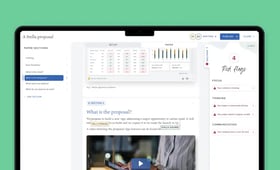A great board pack is both the stimulus for the boardroom conversation and a record of good governance. In this article, we provide practical tips for how a board pack can both promote and evidence an effective board.
1. Focused board input
Too many boards get bogged down in the same old topics without considering what it is that their organisation needs right now. And, all too often, management see the board more as a rubber stamp than a wealth of skills and experience to draw upon.
Effective boards are focused boards. They identify their priorities annually, considering the wide breadth of their role and the needs of their organisation. Their board calendar allocates time to these priorities – as well as the routine items and the unforeseeable ones. Similarly, board papers should clearly specify the input required from the board. A tick box for whether a board paper is to note, to discuss, or for a decision is a start – but management could go further, for example, requesting the board’s advice on a specific approach or outlining the implications of delaying a decision.
2. Key messages upfront
Many board reports fall into the trap of starting with a general introduction to the topic, requiring the reader to wade through multiple pages before the focus of the paper and management’s question or recommendation become clear. This is not helpful for the time-poor director moving between different topics as they navigate through the board pack.
We recommend that every board report begins with an Executive Summary that provides a snapshot of the whole report. This will ensure the reader does not miss the key messages and it will enable them to digest the rest of the report more easily, helping them to prepare for the board meeting. We recommend a simple structure for this, with one or two sentences for each section:
- Context – why the board is receiving the paper now and how it links to the organisation’s aims
- Questions covered – the highest-level questions the paper seeks to answer
- Conclusions drawn – a summary of the answer for each of the questions posed
- Input sought – a summary of any decision and/or advice sought from the board.
3. Clear discussion outcomes
Board minutes are not the only place to record the outcomes of board discussions. Nor are minutes much good for tracking the progress of board actions or delegations.
Board packs should have a regular Action Tracker to record the progress of actions agreed, separating the outstanding from the in-hand and the closed actions. Similarly, where the board has delegated discussions to committees, an update on the outcomes of these is vital. Instead of committee minutes, a concise update report can be used. This can simply highlight the meeting agenda items, key discussion points and any agreed actions.
Interested in finding out more or applying these tips to your board? Get in touch



